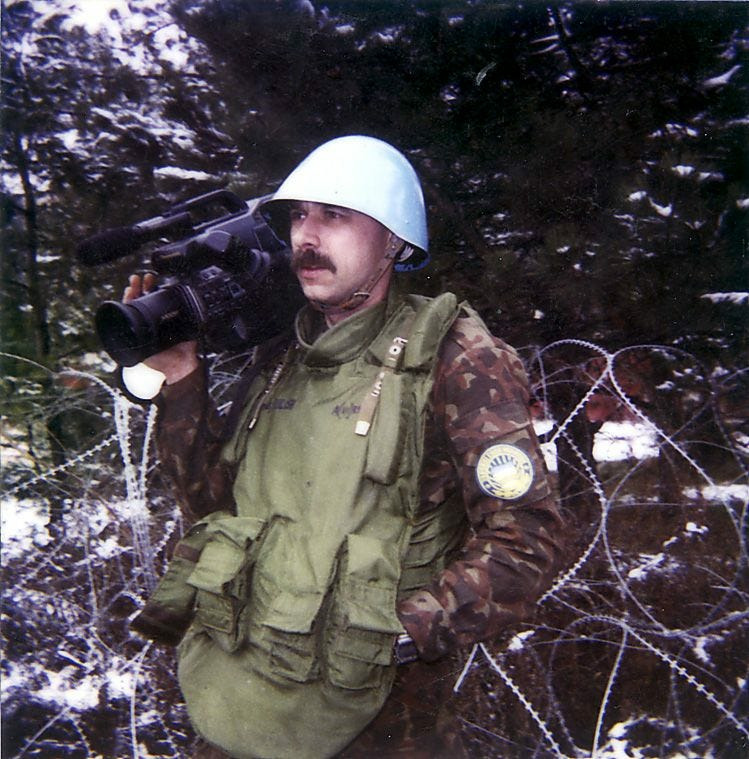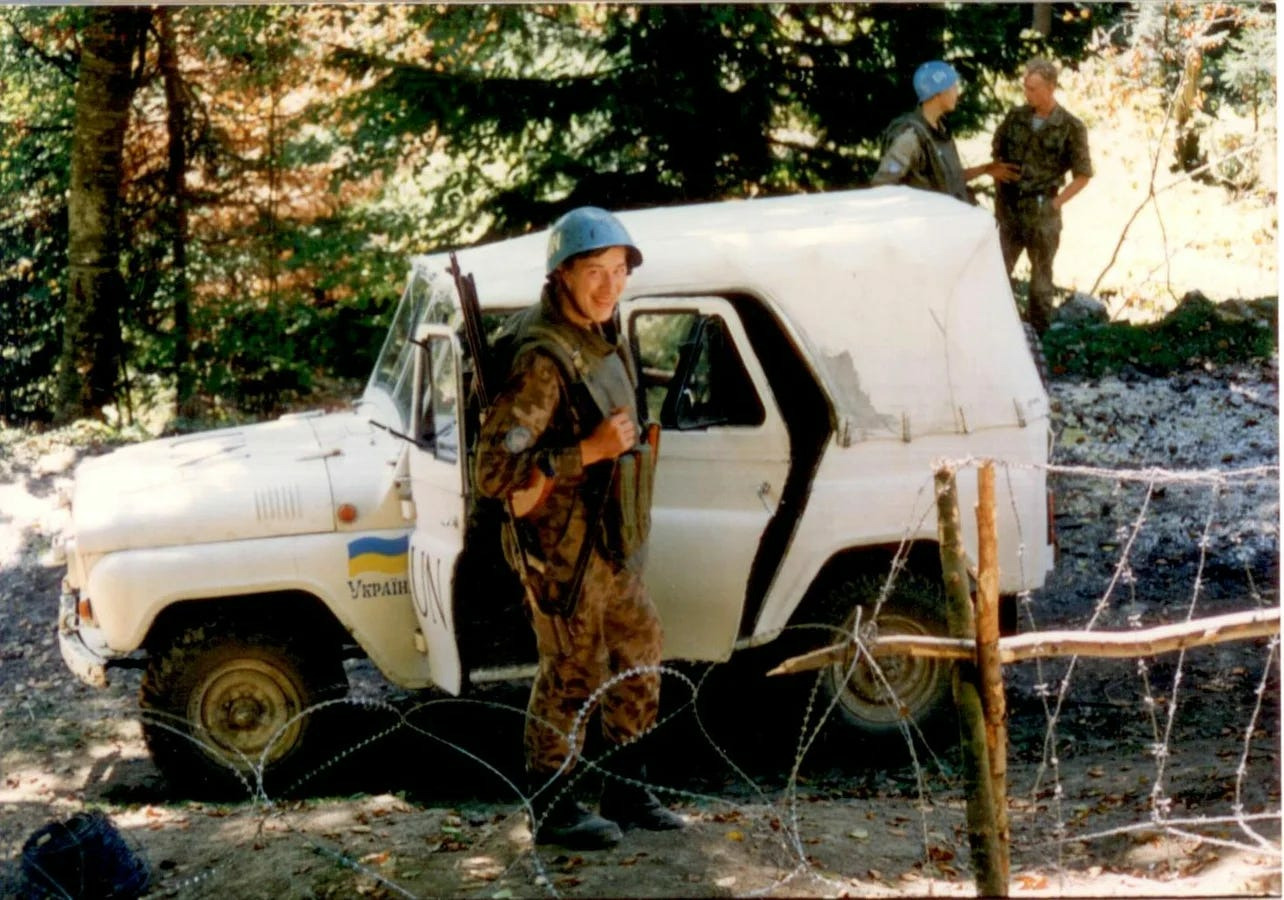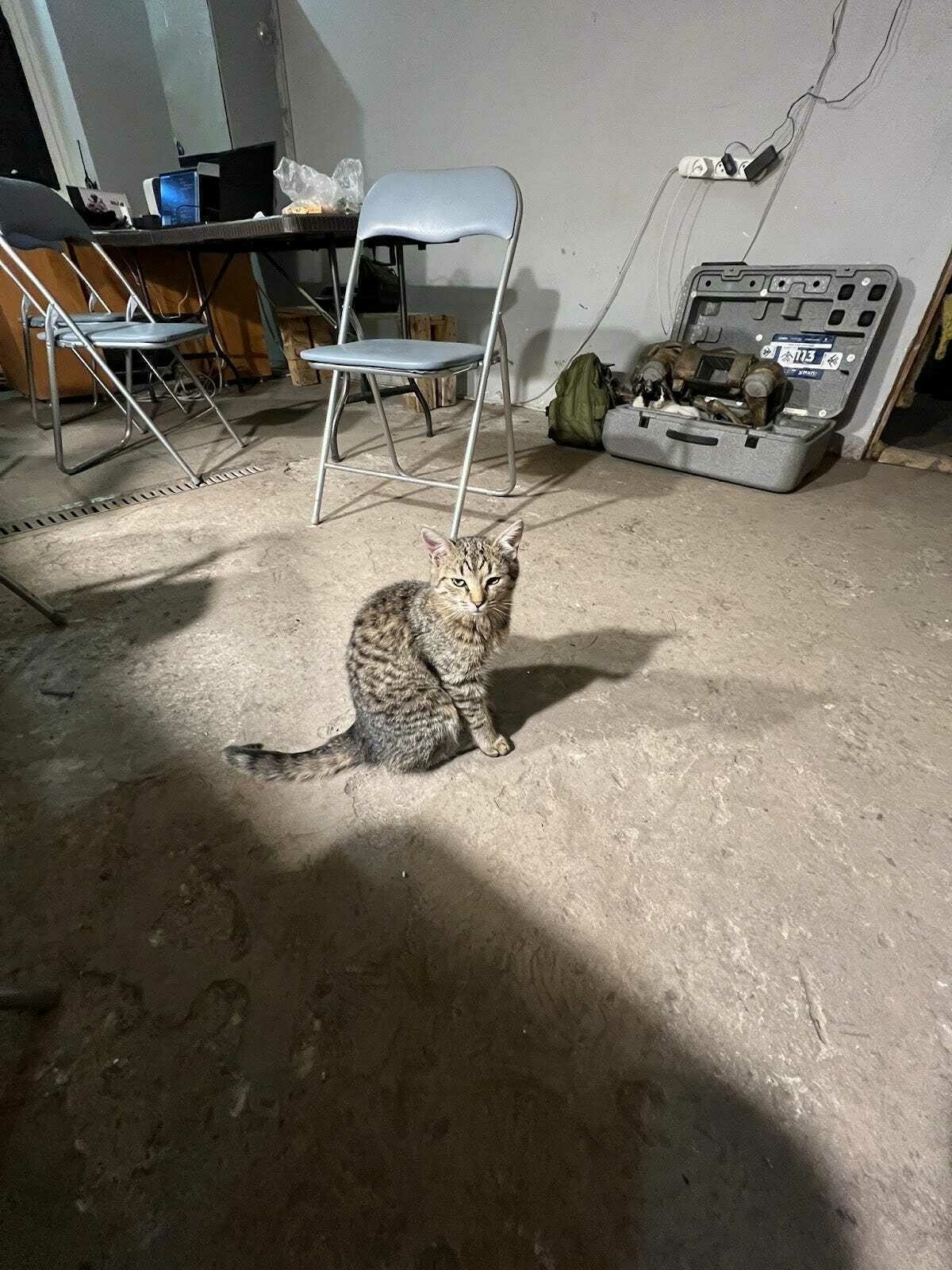Editor’s Note: Fight cynicism and apathy. Embrace news organizations that illuminate, educate and inform. That’s what we at The Counteroffensive focus on accomplishing. We’re based in Kyiv, taking daily risks to ensure that stories here are not forgotten.
Support that cause? Upgrade now to keep us going!
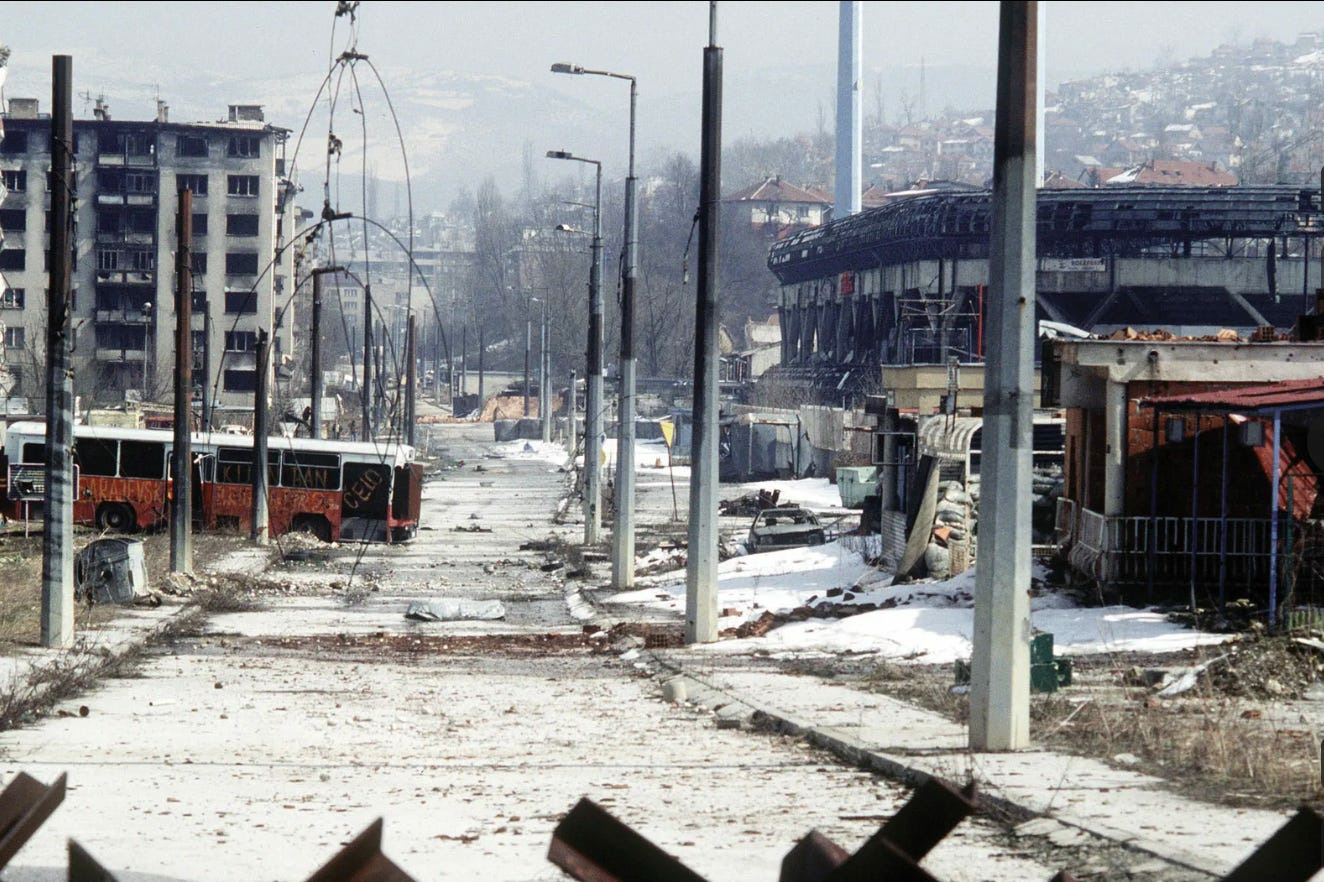
Over 30 years later, Ukrainian Andrii Kulish still can’t get the horrors that he saw in Yugoslavia out of his head.
Hungry, homeless children, without heat and electricity, in the heart of Europe. He remembers seeing puddles of blood, severed human limbs, and intestines and brains on the asphalt of Sarajevo.
Andrii was participating in a peacekeeping mission in Yugoslavia in 1992. It was the first mission conducted by the newly independent Ukraine.
Andrii and his fellow Ukrainians kept irreconcilable enemies apart, trying to keep the peace. They evacuated and protected civilians, risking their own lives to save others.
Even in the most difficult times, Ukraine has demonstrated a willingness to help others by participating in peacekeeping missions worldwide. However, the world has delayed decisive help now that Ukraine is the one that needs peacekeeping. It is a question of justice: can countries who contribute to peacekeeping count on reciprocity when they are threatened?
Before the full-scale invasion, Ukraine was known for its peacekeeping efforts. It participated in 36 military operations, becoming the ninth largest contributing country of military personnel to UN peacekeeping missions.
Until it was subjected to a full-scale war by the Russians itself.
Currently, Europe is divided over the idea of sending peacekeepers to Ukraine if there is a ceasefire with Russia. While the U.K., France, and northern European countries support sending their peacekeepers to Ukraine, the Polish president Andrzej Duda, Kyiv's closest neighbor, does not consider it necessary.
Andrii and his fellow Ukrainian peacekeepers arrived in Bosnia on July 15, 1992. To make sure they could get there, the 240th separate special Ukrainian battalion was formed in record time – just three weeks – and became part of the international UN forces, UNPROFOR (United Nations Protection Forces). This mission included almost 400 Ukrainian soldiers, with armored personnel carriers and trucks.
"The horror was so great that some Ukrainian soldiers could not withstand the mental stress: some had mental disorders; some peacekeepers later got drunk; some peacekeepers committed suicide," Andrii Kulish recalled for The Counteroffensive.
Andrii was sent to Yugoslavia by the order of the Ukrainian Minister of Defense. As an officer of the Information and Analysis Department, he filmed all the war crimes that took place in Yugoslavia as a cameraman. Among the worst things he saw were severed children's heads hanging from a fence.
Before its dissolution, Yugoslavia consisted of six republics and two autonomous provinces. These were Bosnia-Herzegovina, Croatia, North Macedonia, Montenegro, Slovenia, Serbia, and Kosovo. During the turmoil that followed the death of former dictator Tito in 1980, different peoples in Yugoslavia demonstrated their desire for independence. However, it took them more than a decade to achieve it.
Yugoslavia broke up. The hostility in the region was caused by a number of factors, primarily ethnic and religious. Orthodox Serbs, Catholic Croats, and Bosnian Muslims, who had coexisted peacefully for centuries, suddenly became irreconcilable enemies. This, together with the deteriorating socio-economic situation, political instability and geopolitical upheaval, led to the outbreak of bloody wars in the 1990s, especially in Croatia and Bosnia.
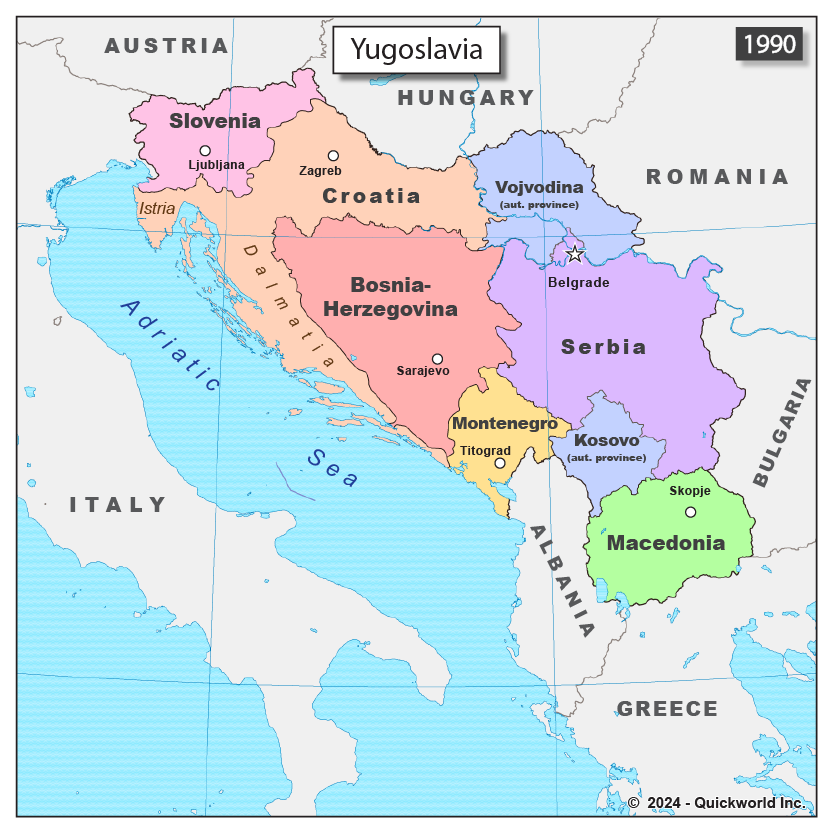
At first, the peacekeepers from the UN, who did not take sides and only helped civilians, were stationed in Sarajevo, the сurrent capital of Bosnia and Herzegovina. Andrii was proud to protect innocent lives.
"I remember how old Bosnian men kissed the hands of our soldiers. And how non-walking crippled children in a Sarajevo orphanage gratefully crawled into the laps of Ukrainian peacekeepers for protection," Andrii said.
Andrii managed to return home to Ukraine several times to bring back the footage he had shot on his missions. Often, the visits home were the hardest moments for him, because of the contrasts he saw between peaceful countries and those at war.
"Some mornings I fed homeless Romani people near the soldiers' canteen, then after an hour and a half flight I unpacked chocolates from French dry rations for my children. There were many such contrasts, and it was challenging to bear them morally," Andrii said.
There were times that Andrii felt like resigning, but he kept coming back.
In 1993, Ukrainian peacekeeping forces were based in the Muslim enclaves of Gorazde and Zepa in Bosnia, accessible only through Bosnian Serb territory. From the first days, they came under fire, guarded facilities, escorted humanitarian convoys, killed snipers, and evacuated the wounded.
The region became notorious around the world two years later, in July 1995, when Ukrainian peacekeepers were guarding Zepa from Serbian troops. Despite the efforts of the peacekeepers, the Bosnian Serb army captured Srebrenica, a town around 30 miles north east of Zepa. A massacre took place there, killing about 8,000 Bosnian Muslim civilians.
This crime is often called the largest genocide in Europe since World War II.
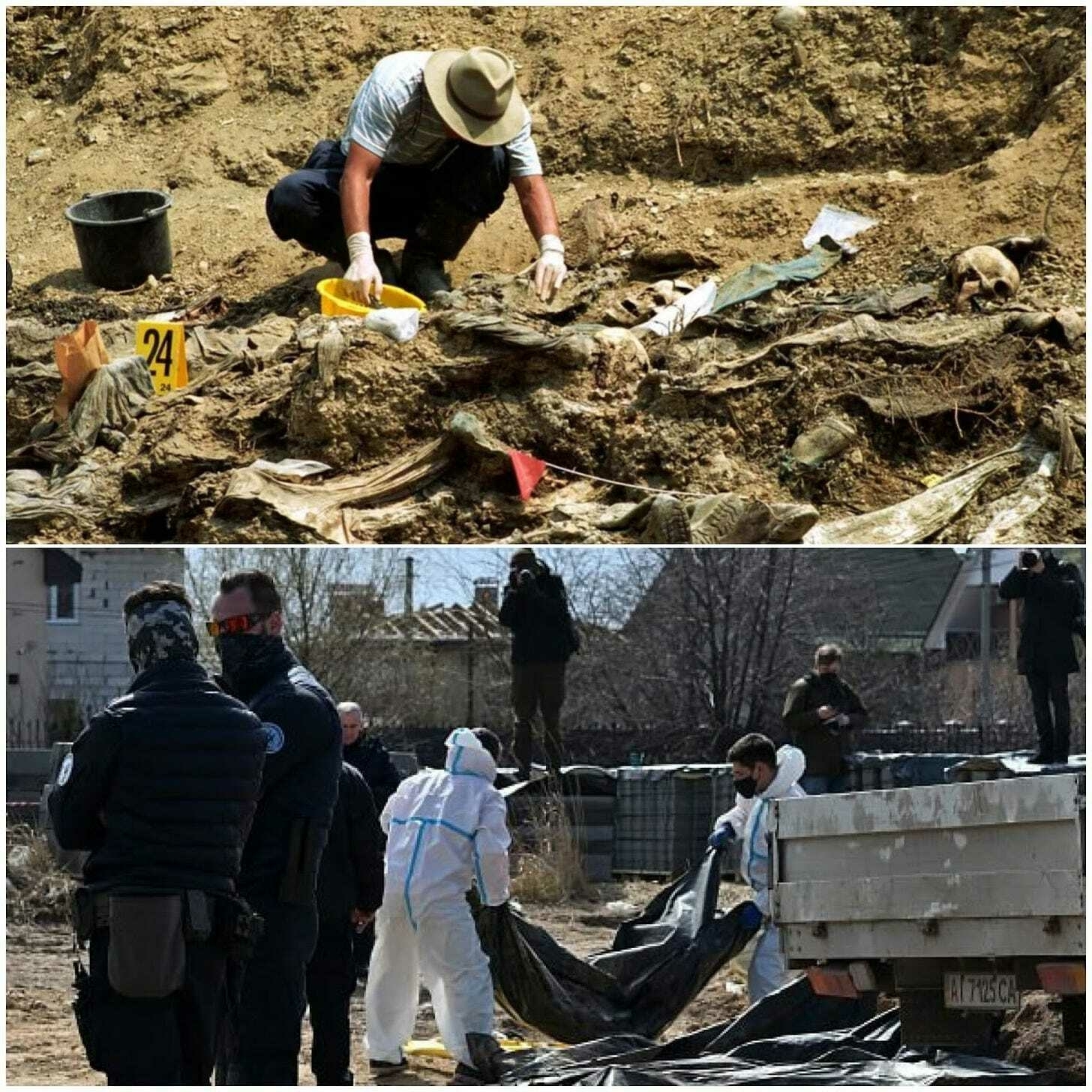
Zepa was the Serbs' next target. The Ukrainian peacekeepers faced pressure from all directions as they tried to protect it. The Serbs insisted that they leave Zepa, while the Bosnians demanded weapons and the deployment of NATO aircraft. Both sides threatened to use force if the Ukrainians did not meet their demands. But they never did.
Instead, Ukrainians, assisted by French peacekeepers, began to rescue civilians.
“This was the most successful operation of the Armed Forces of Ukraine, before the outbreak of war in Ukraine in 2014... More than 5,000 people were evacuated and there were no losses on our side,” historian Nataliya Nechayeva-Yuriychuk told The Counteroffensive.
This was not Ukraine's only successful peacekeeping mission in that period. When Russia provoked a war in the Abkhaz region in 1992, it was the Ukrainian military that helped save Georgian civilians.
After Russian troops occupied the region, ethnic cleansing began, and tens of thousands of civilians fleeing the violence were trapped by the cold in the mountains. Many Georgians died of cold and frostbite. Georgia appealed to the international community for help, but the only country that responded immediately was Ukraine.
The Ukrainian government sent a detachment of military helicopter pilots to Georgia, launching their rescue operation on just the third day after the request. The UN had believed such an operation would take at least a month to prepare, according to one of the UN representatives with extensive experience, whose name was not disclosed. Maneuvering under fire, each crew made several daily flights, risking their lives, saving 7,500 people from ethnic cleansing.
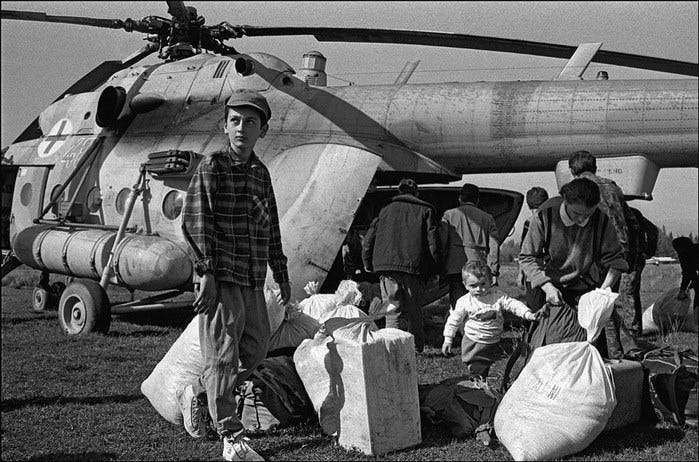
The mission of the Ukrainian helicopter pilots in the mountains of Georgia was the first carried out independently by Ukraine without the help of international organizations.
After their return to Ukraine, the peacekeepers' heroic actions were played down, as the authorities sought to avoid antagonizing Russia, according to Oleh Tarchevskyi, a retired Air Force lieutenant colonel who participated in the mission.
Only Georgia officially recognized the peacekeepers’ bravery, and Georgians still remember their heroism today, said political scientist from Georgia Vakhtang Maisaya. It wasn't until after 2014, when Ukraine faced its Russian aggression, that the story of this rescue mission began to spread within Ukraine.

Ukraine also joined a peacekeeping mission in 2000, based in West Africa’s Sierra Leone during its civil war. During their work there, Ukrainian aviators conducted rescue operations that saved dozens of lives. In 2004, six Ukrainians were killed when their MI-8 helicopter crashed into the sea.
Further peacekeeping operations were carried out by the Ukrainians in Congo and Uganda – even after the start of the war with Russia in 2014. In mid-2022, due to the outbreak of a full-scale war, Ukrainian peacekeepers were returned home.

Moreover, peacekeeping missions have provided Ukraine with valuable operational experience. In particular, it has helped to reform Ukraine’s police force. The reforms reduced corruption but did not solve all problems, said Oleh Martynenko, who twice participated in peacekeeping police contingents, and now serves in the Ukrainian military.
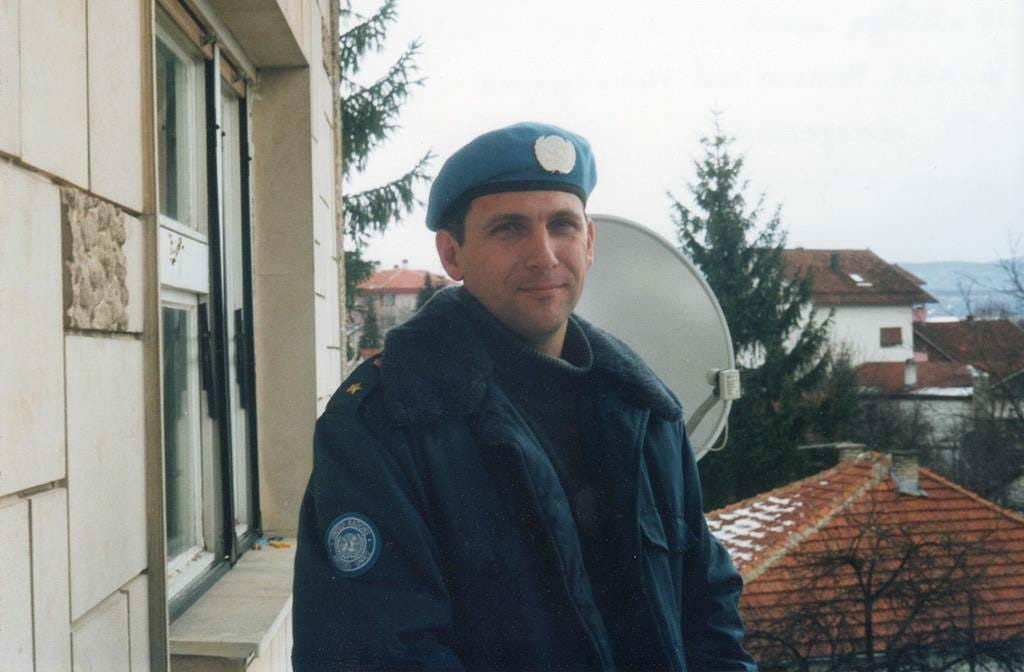
Recently, the possibility of other nations sending peacekeepers to Ukraine in the event of a peace deal with Russia has been increasingly discussed. French President Emmanuel Macron has proposed the deployment of European troops. However, Oleh Martynenko thinks this could only happen if Ukraine's territory was relatively safe, after the cessation of active hostilities.
The current American president, Donald Trump, has also proposed to deploy European troops in Ukraine to monitor compliance with the ceasefire.
However, Europe does not want to confront Russia alone. It could send about 100,000 troops to Ukraine as peacekeepers, but would need to set up a rotation system, as units prepared for and recovered from deployment.
Since its independence, Ukraine has played a considerable role in international peacekeeping, saving hundreds of innocent lives.
Now it could be time for the world to return the favor.
Want to support our human interest reporting? Show your appreciation by hitting our tip jar. Funds go towards helping get cold weather gear and batteries for our team.
NEWS OF THE DAY
EUROPE CONSIDERS SEIZURES OF RUSSIA’S ‘SHADOW FLEET’: European countries are quietly discussing large-scale seizures of Russian oil tankers in the Baltic Sea following recent incidents, Politico reported, citing EU diplomats and officials.
The talks follow damage to an undersea power cable between Finland and Estonia in December, allegedly caused by a tanker linked to Russia’s ‘shadow fleet,’ which is used to evade sanctions. Finnish authorities detained the Eagle S vessel, carrying Russian oil, as part of an ongoing investigation into whether the damage was accidental or deliberate.
NATO Secretary General Mark Rutte also announced plans to strengthen the alliance’s military presence in the Baltic Sea. Meanwhile, European countries are drafting new legislation to justify seizing Russian oil tankers under international law, citing environmental or piracy concerns. If those measures fail, individual nations may introduce new national laws to detain ships further offshore.
RUSSIA HAD ORDERS TO TORTURE POWS: At the beginning of Russia's full-scale invasion of Ukraine, Russian prisons were ordered to torture Ukrainian soldiers. According to The Wall Street Journal, the head of Russia's Federal Penitentiary Service, Igor Potapenko, ordered special forces to act brutally and remove cameras that could record torture. Units from different regions of Russia received similar instructions, and rotation was introduced for personnel.
These orders led to the systematic torture of prisoners: they were beaten with stun guns, tortured and denied medical treatment, often resulting in amputations. The testimony of three former employees of the Russian Federal Penitentiary Service who testified before the International Criminal Court is supported by documents, interviews with prisoners and other evidence.
TRANSNISTRIA REFUSES GAS FROM EU: Transnistria, under pressure from Moscow, has rejected 60 million euros in European Union aid to overcome an energy crisis. However, gas will continue to flow to the region, Moldovan Prime Minister Dorin Recean said.
According to him, the supplies will be provided by Hungary's MET Gas and Energy Marketing AG, which will receive funds from Dubai's JNX General Trading. Russian media reported earlier that the money de facto comes from Russia.
Cat of Conflict
Today’s Cat of Conflict is Mikrotik, named by the drone unit after a Latvian manufacturing company that sells internet routers.
Stay safe out there.
Best,
Myroslava

